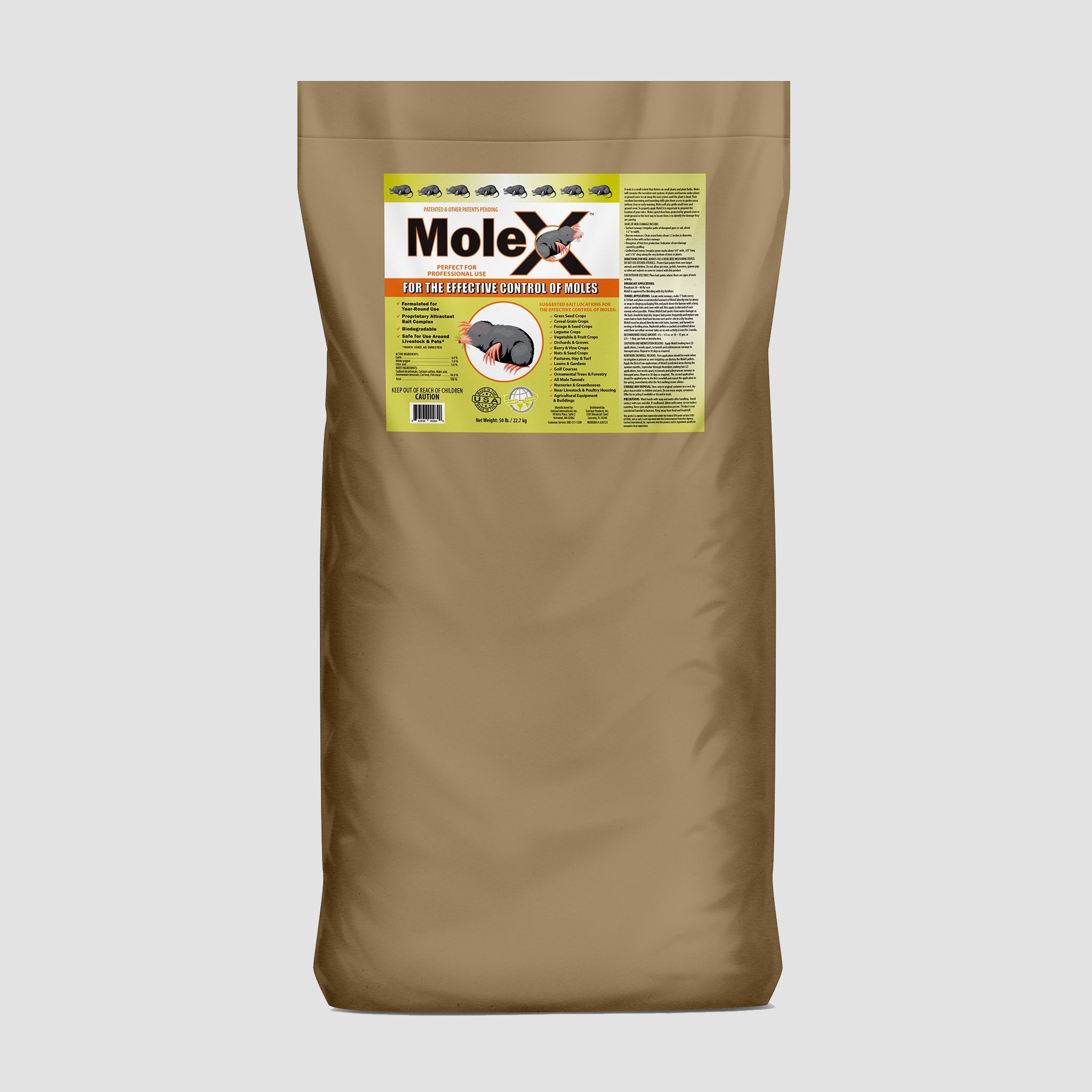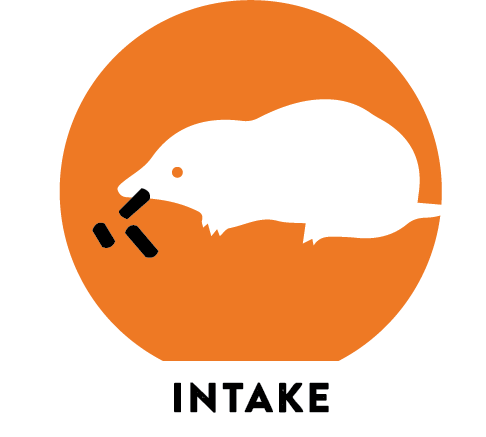

MoleX®
MoleX®
50 lb.
5581 Broadcast Ct
5581 Broadcast Court
Sarasota FL 34240
United States
When used as directed, specially formulated MoleX® controls against common species of moles without harming pets, livestock, wildlife, or people.
To use, place in areas used by moles for feeding. Formulated using naturally derived ingredients*, MoleX® Pellets will cause acute environmental stress to moles, causing them to abandon their tunnels and search for a new habitat.
Ready-to-use with no mixing or spraying required, MoleX® is safe for use around trees, plants, and shrubs. When used as directed, MoleX® is landscape-safe. Place MoleX® according to package instructions in visible mole tunnels in lawns, ornamental gardens, flower beds, and non-crop grassy areas. Not for use above ground.
For safe, efficient & effective mole control, choose MoleX® Pellets.
Additional information:
- Naturally Derived* mole Control
- Safe for Use Around Livestock & Pets When Used as Directed
- Perfect for both professional & DIY use
- EPA minimum risk pesticide
- Patented mechanical kill system requires no conventional poisons
- Protected by 3 U.S. and 2 Global patents, other patents pending
*Garlic, White Pepper, Citric Acid
Ingredients:
Active Ingredients: Garlic, White Pepper, Citric Acid
Inert Ingredients: Fish Meal, Sodium Bicarbonate, Calcium Sulfate, Malic Acid, Ammonium Benzoate
Safety Data Sheet:
MoleX® SDS
| Active Ingredients : | |
|---|---|
| Garlic | 6.0% |
| White Pepper | 5.0% |
| Citric Acid | 5.0% |
| Inert Indredients : | |
| Soduim Bicarbonate, Calcium Sulfate, Malic Acid, Ammonium Benzoate, Cat Food, Fish Meal | 84.0% |
SAfe

Safe for Use Around Livestock & Pets When Used as Directed.

Patented Mechanical Kill System Requires No Conventional Poisons.
Formulated for Outdoor Use. Perfect for Both Professional & DIY Use.
How MoleX® works

Step 1
Moles naturally intake 10% of their body weight per feeding; consuming 4%-6% of the rodent’s weight is lethal for the pest.

Step 2
Moles have a very weak respiratory system. The garlic, pepper and citric acid attack their respiratory system.

Step 3
The citric acid will cause acute
environmental stress to moles, causing them to abandon their tunnels and search for a new habitat.

Step 4
The continuing attack of their
respiratory system leads to causing respiratory distress and ultimately, death.
